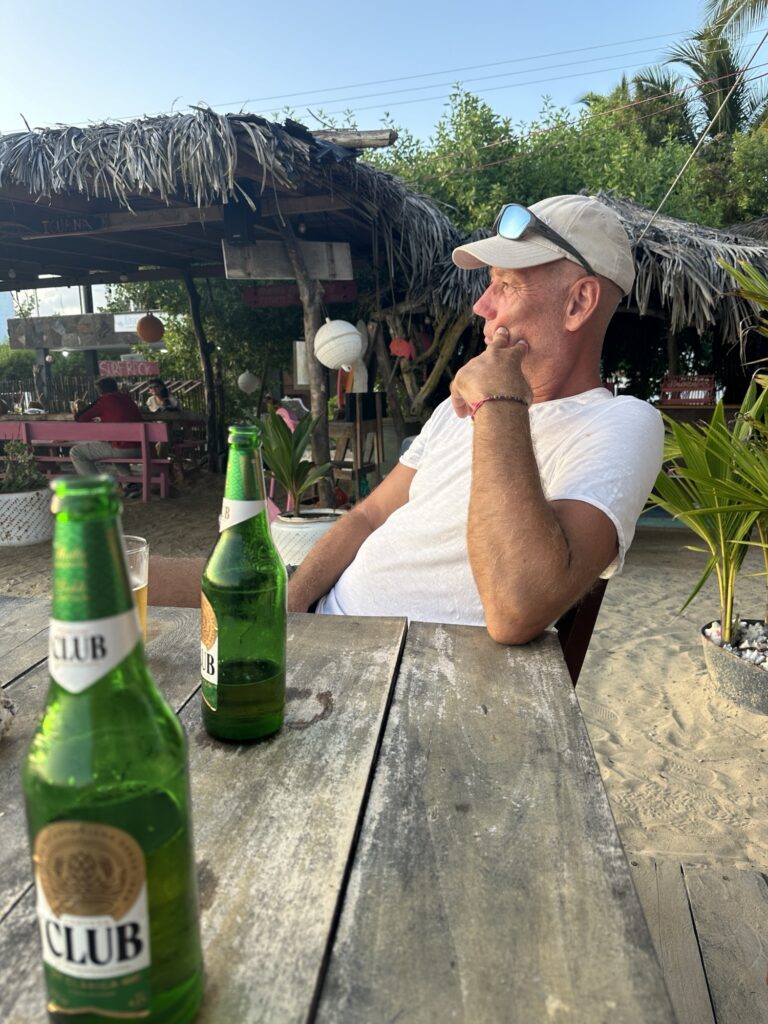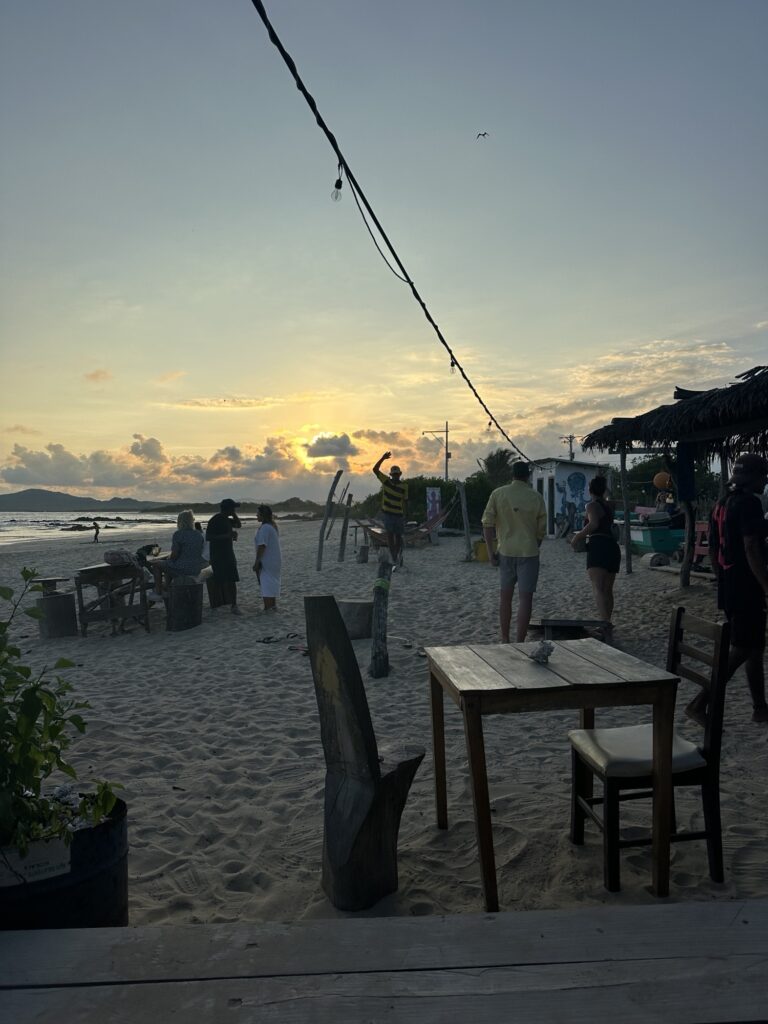After we came back from our week diving, we were ready to start exploring the second island we have access to, Isla Isabela. It is normally an easy sail downwind from Isla Santa Cruz for 43 nm. Not so much on the day we picked… The weather forecasts here in Galapagos have proven to be very unreliable. As the archipelago sits right on the equator, they are influenced from many different currents and weather systems.
What was supposed to be an easy sail, turned out to be a fight with wind and currents straight against us. We had already booked a hiking tour with our friends, Tom and Karmen from SV Sauvage, for the following day, so we went for it anyway.
Isla Isabela is the largest of the islands, but only has 1,500 inhabitants in one town, Puerto Vilamil. The anchorage is sheltered and very nice, and the animal life that we could see straight from the boat, was amazing. Just as we dropped the anchor, we already saw penguins (the Northern most penguins on the planet), sea lions and rays.
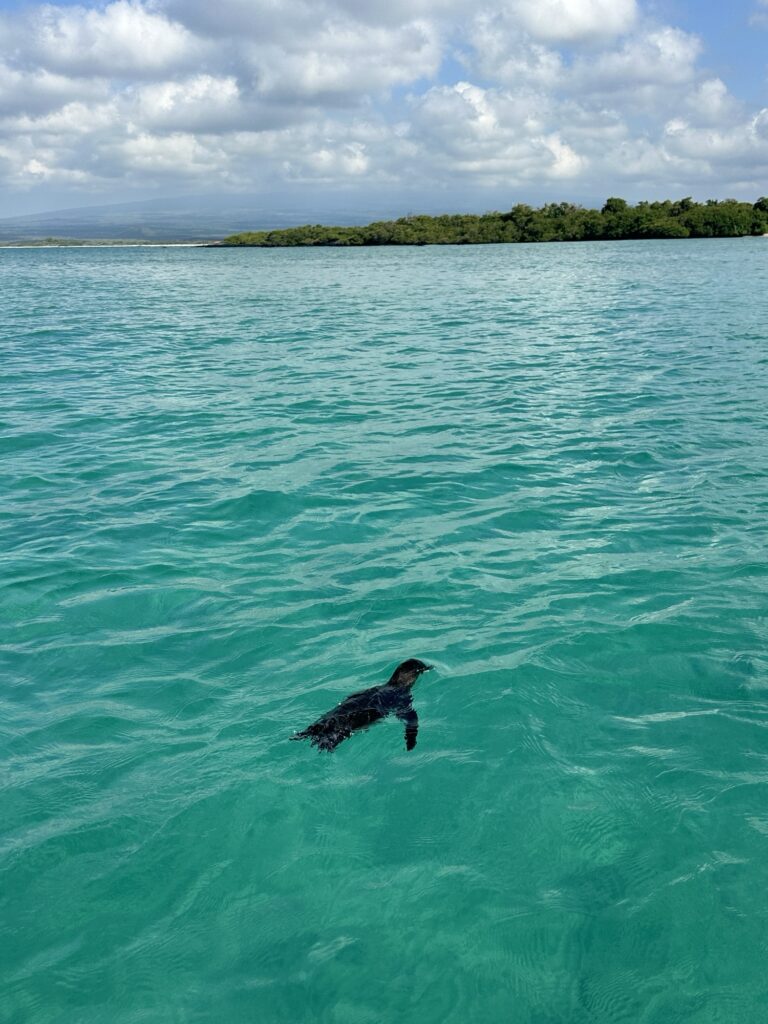
The main tour on Isla Isabela, is definitely hiking Sierra Negra, which is the second largest volcanic crater on the planet. The day after we arrived, we began the trip early in the morning, together with Tom and Karmen.
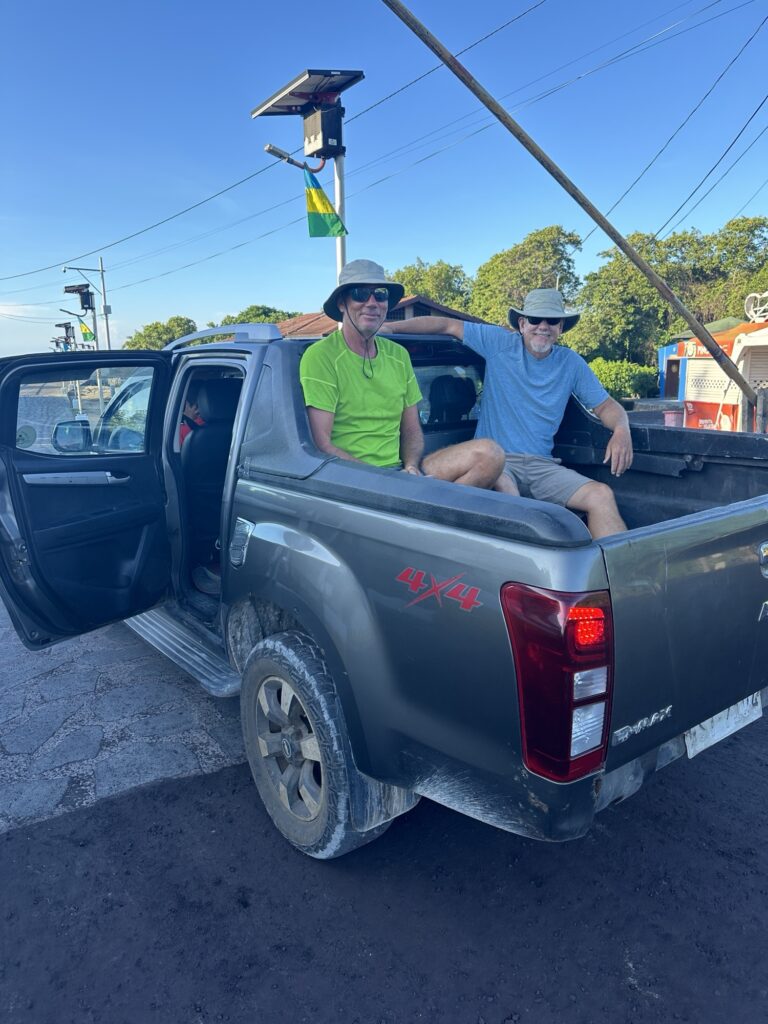
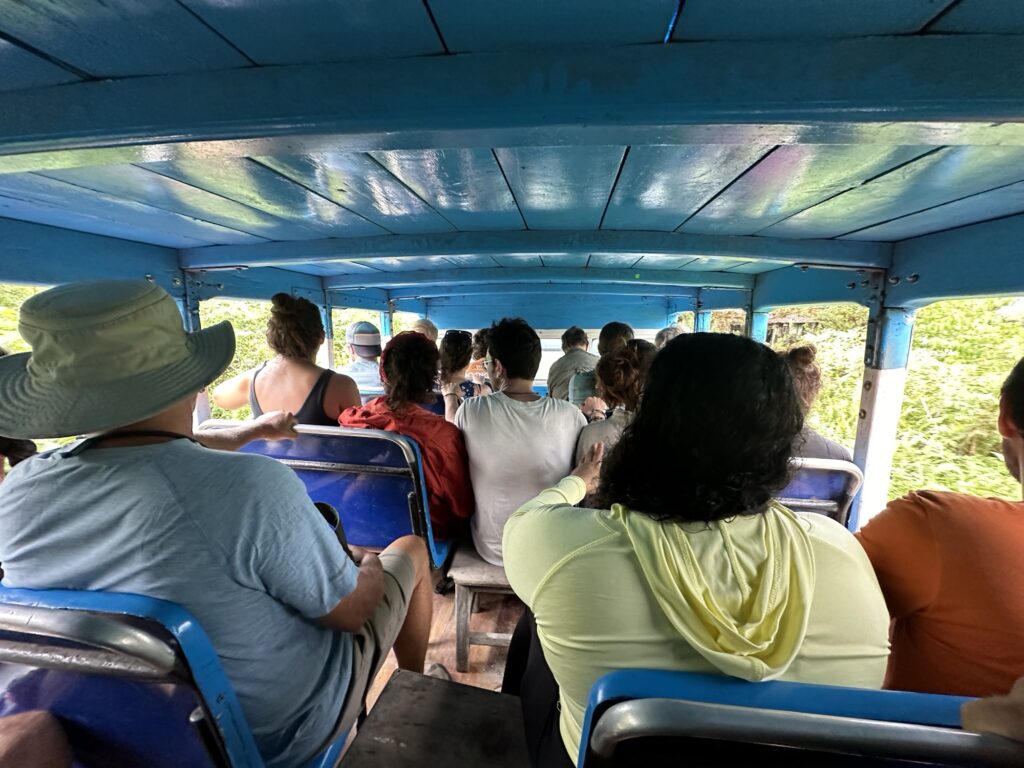
We were a large group this day, a total of 40 people. The day before, there were only five hikers making the tour. Something told us we had picked a good day for the hike, as most of the days, there are a lot of clouds surrounding the mountain.
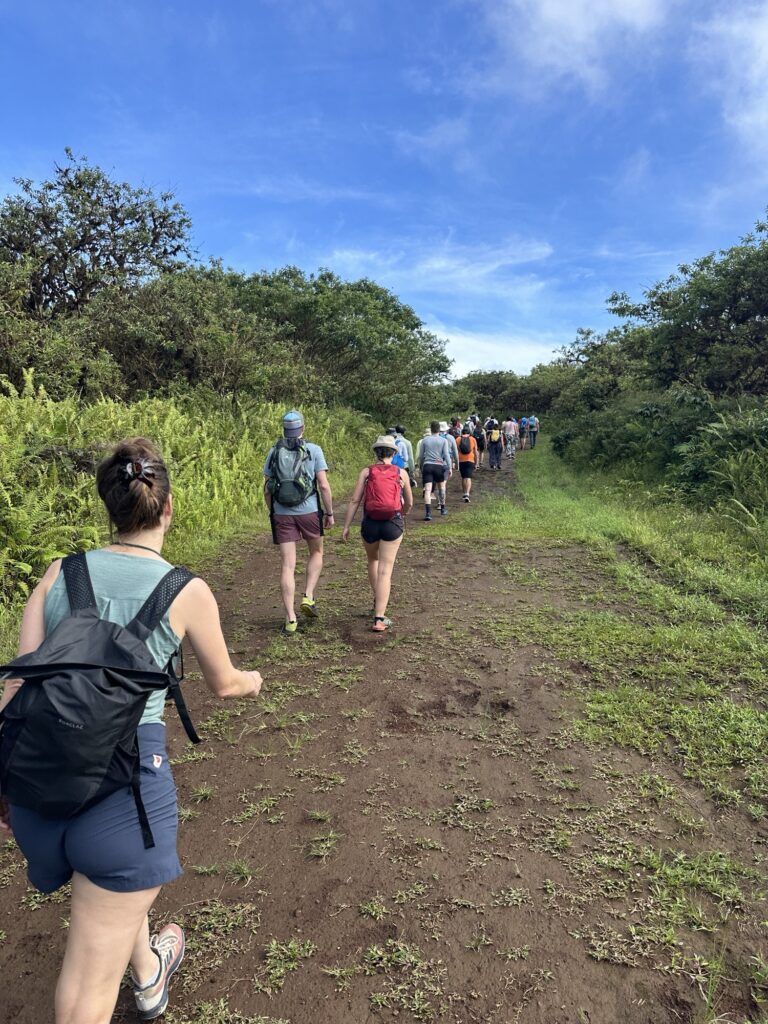
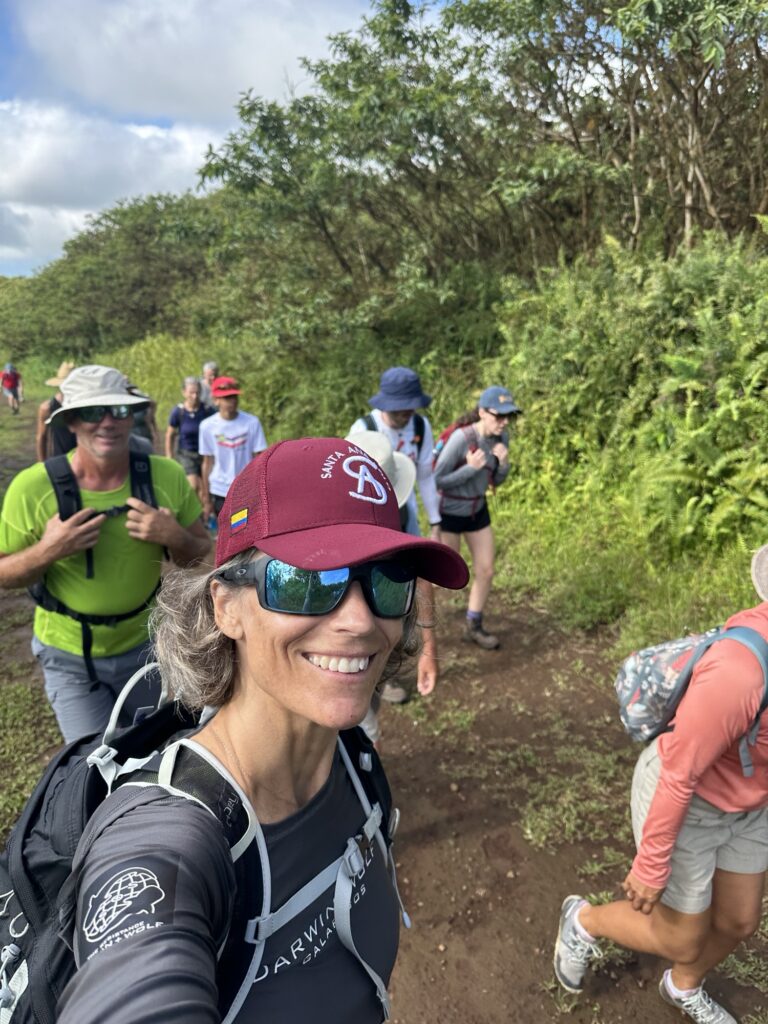
The trail is easy to walk, and not too much elevation. We reached our first stop, the Sierra Negra crater, after less than an hour. The crater is 9 km across and 11 km long. It is absolutely massive, and filled with dark lava rocks. Quite the view, and gives a good indication of the forces at hand when it last erupted in 2005. Supposedly the ashes went as much as 7,6 kms into the air.
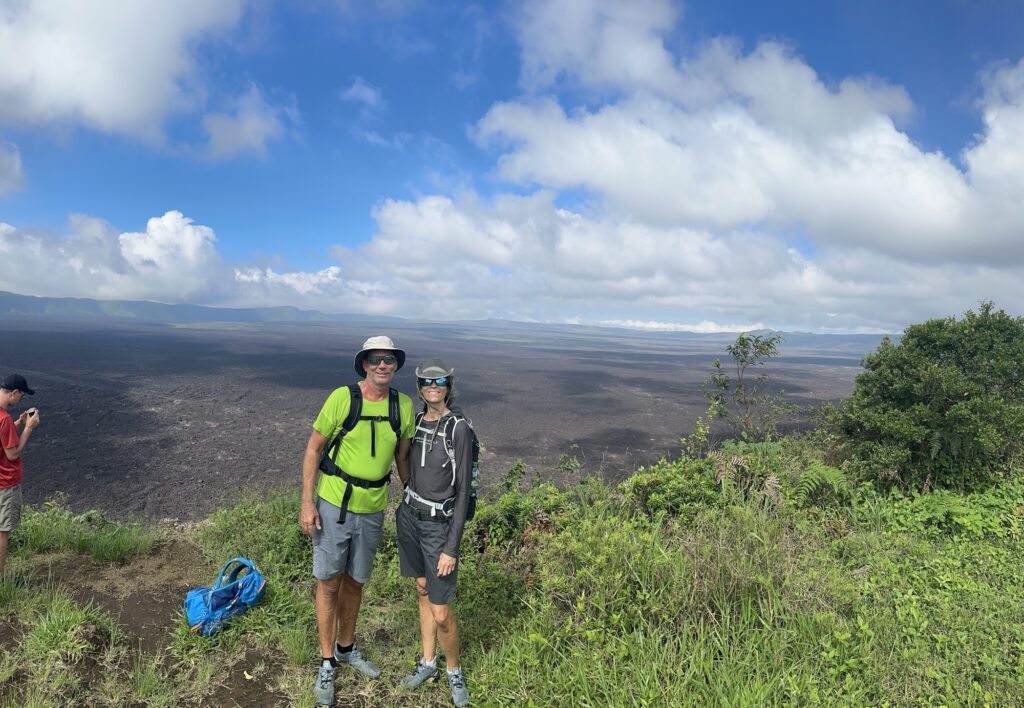
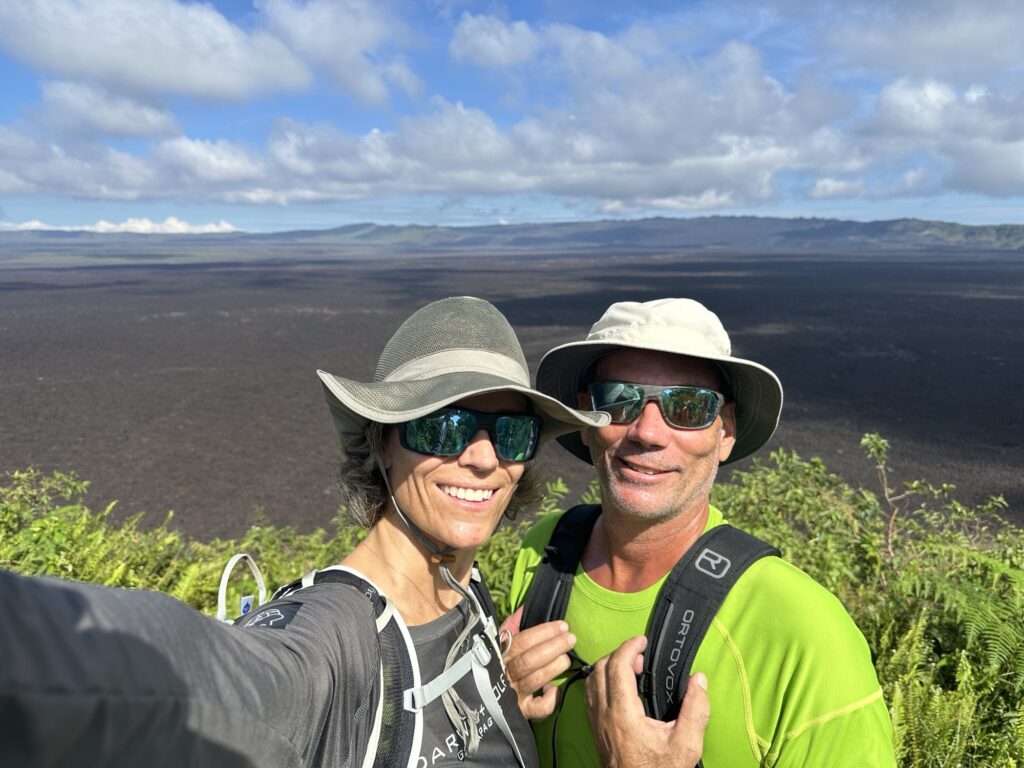
The trail continued on towards the second volcano of the day, Volcano Chico. It had its last eruption in 1979, and we were able to walk along the lava rocks. The diversity of the lava rocks and the contrasts with the surroundings were quite spectacular.
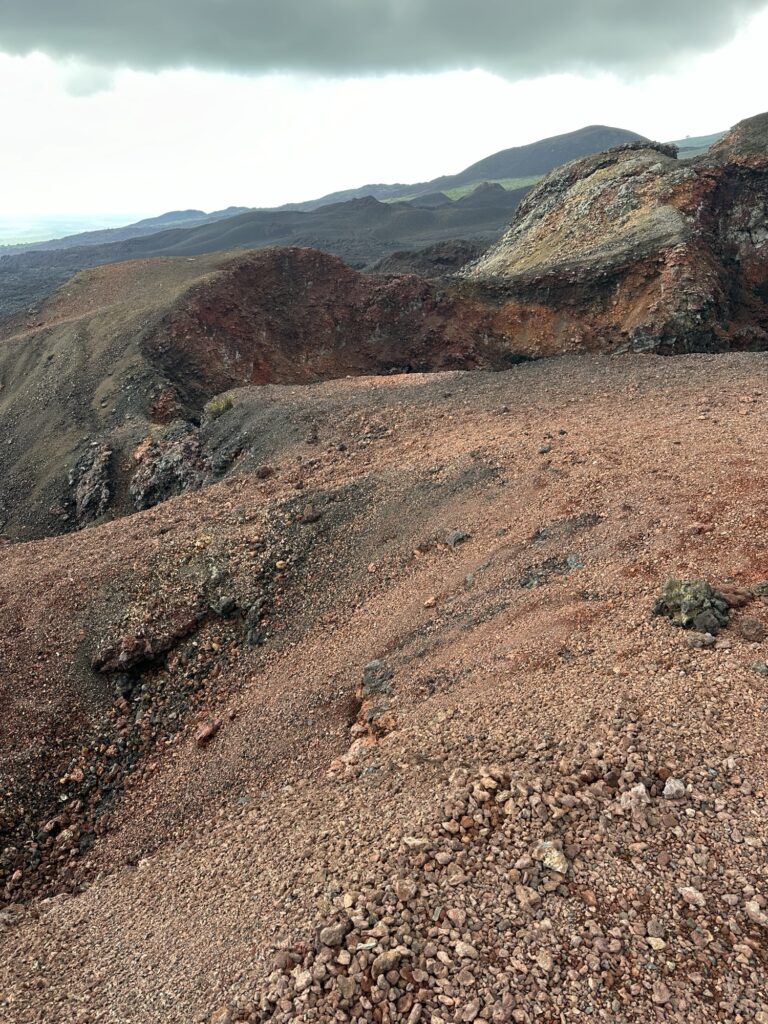
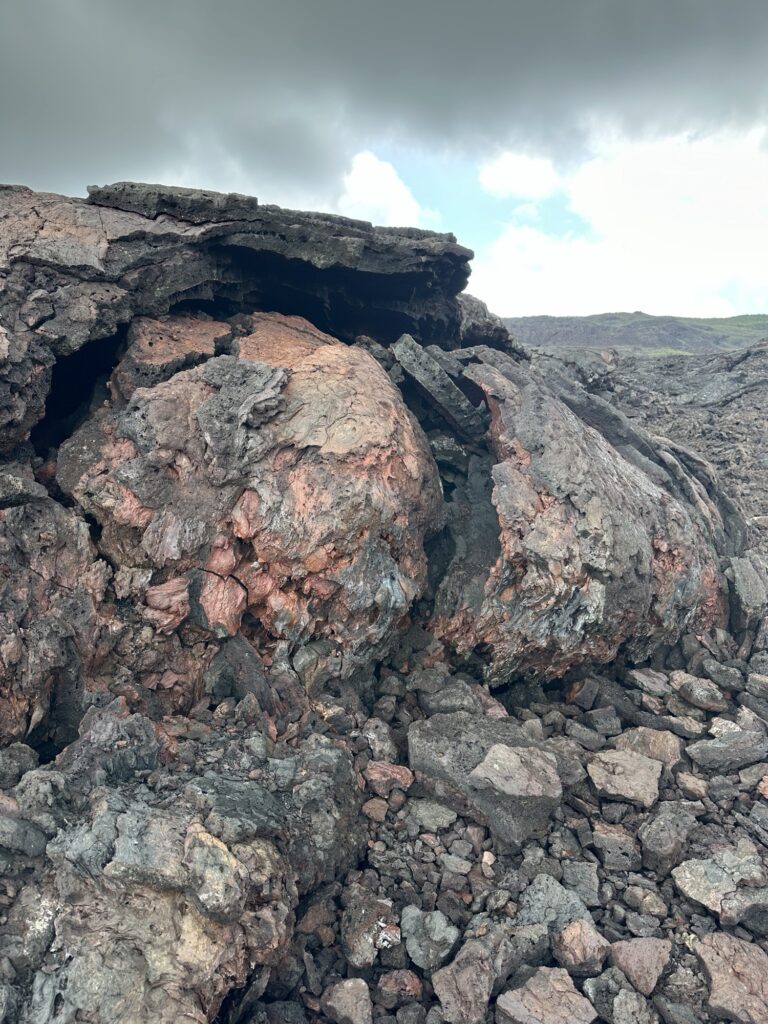
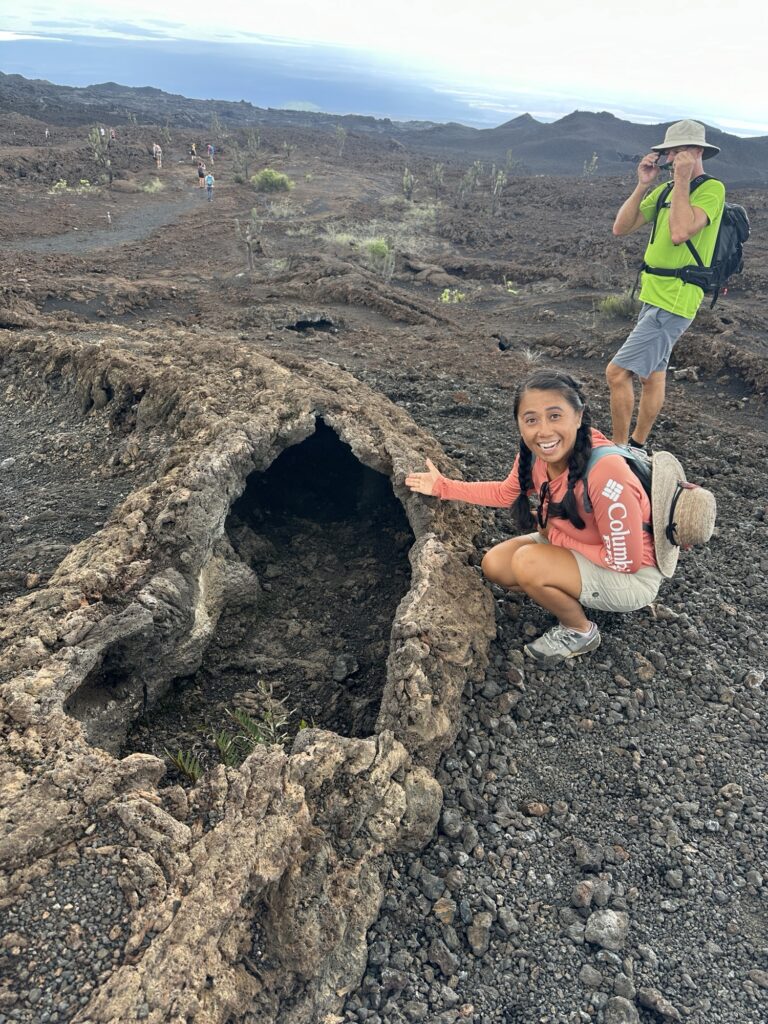
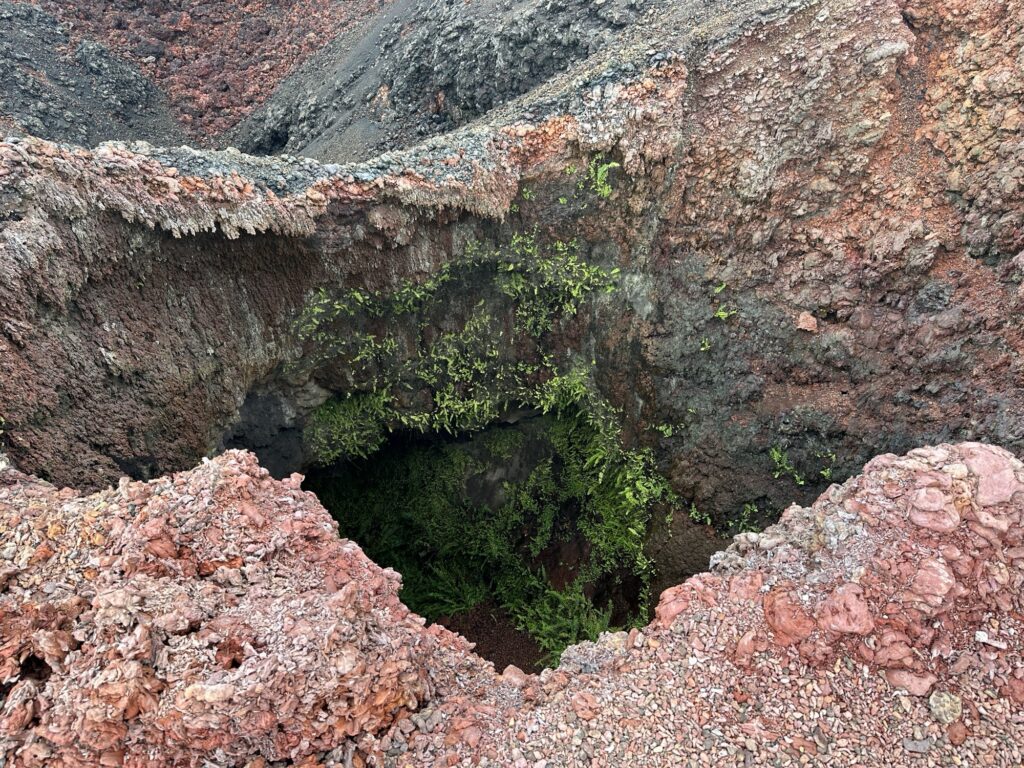
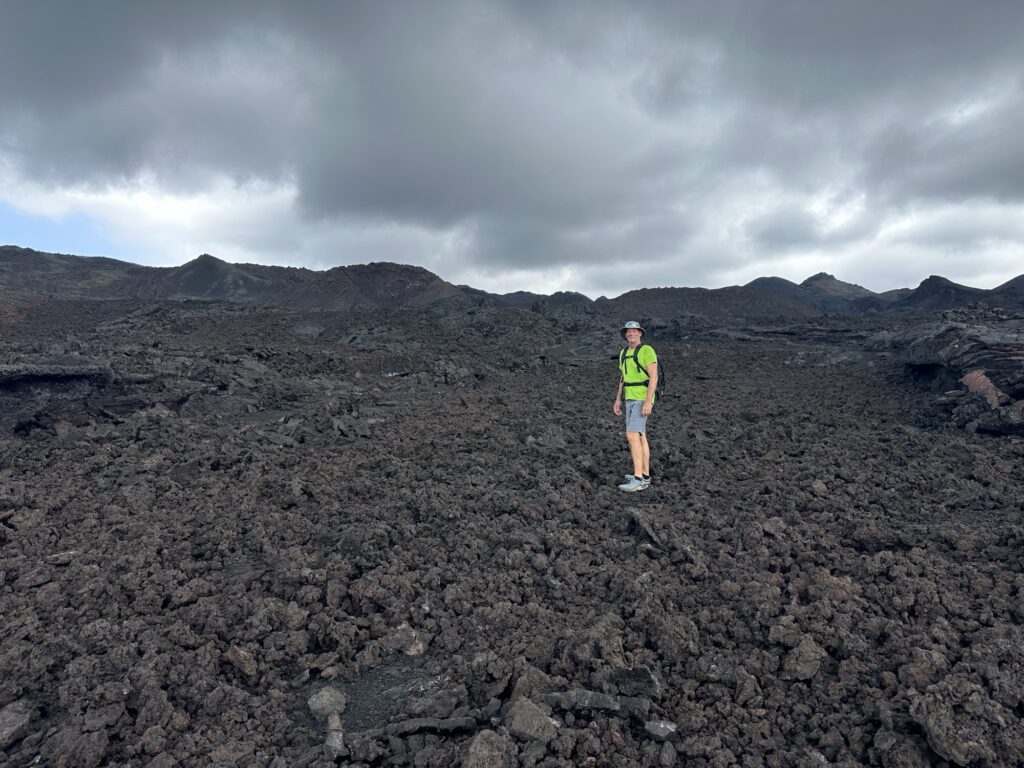
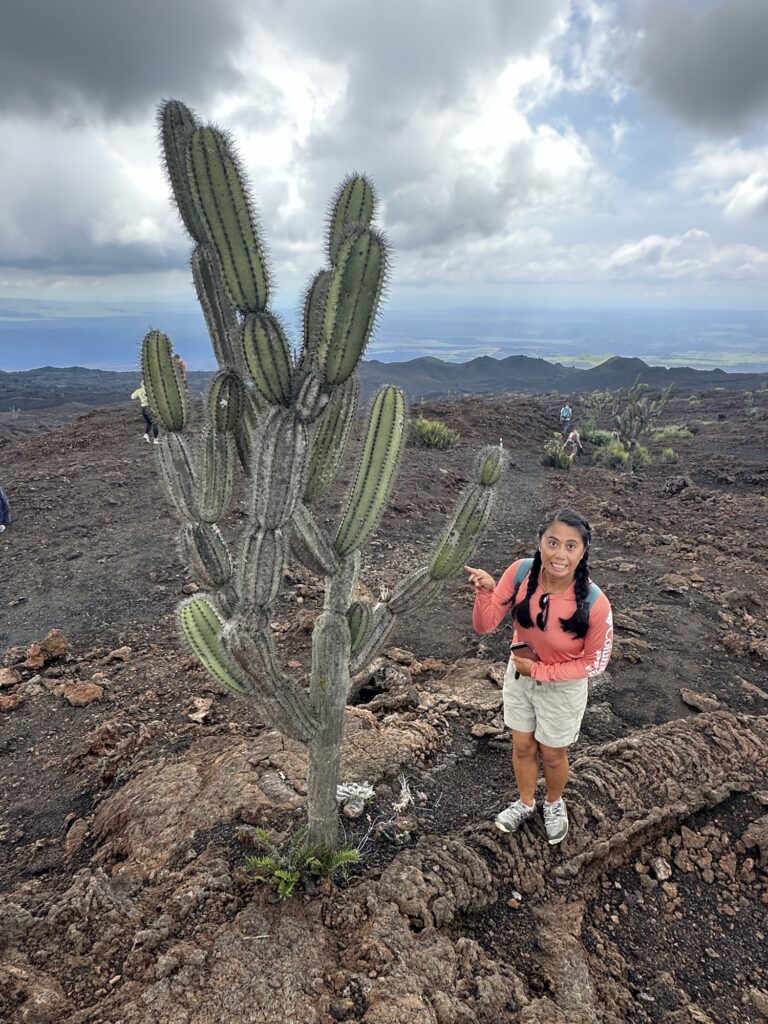
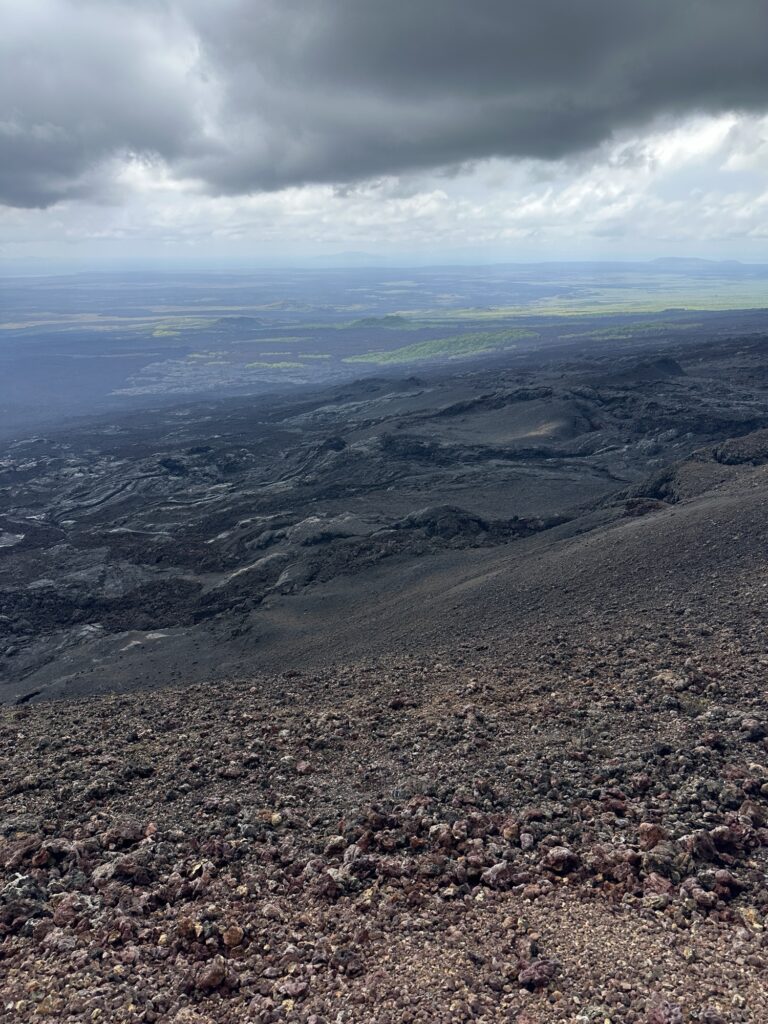
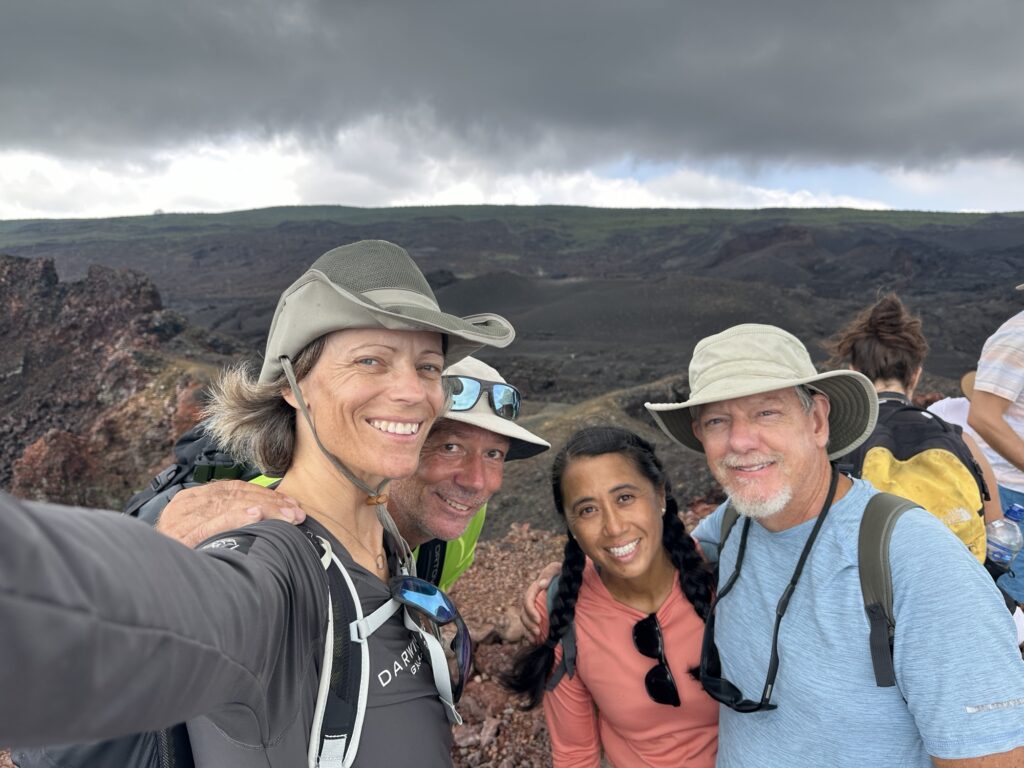
The trip took us totally about 4 hours, and when we got back to town, we were lucky that there was a farmer’s event at the town square. This is a small town, which normally has little access to fresh produce, so we appreciated getting access to some.
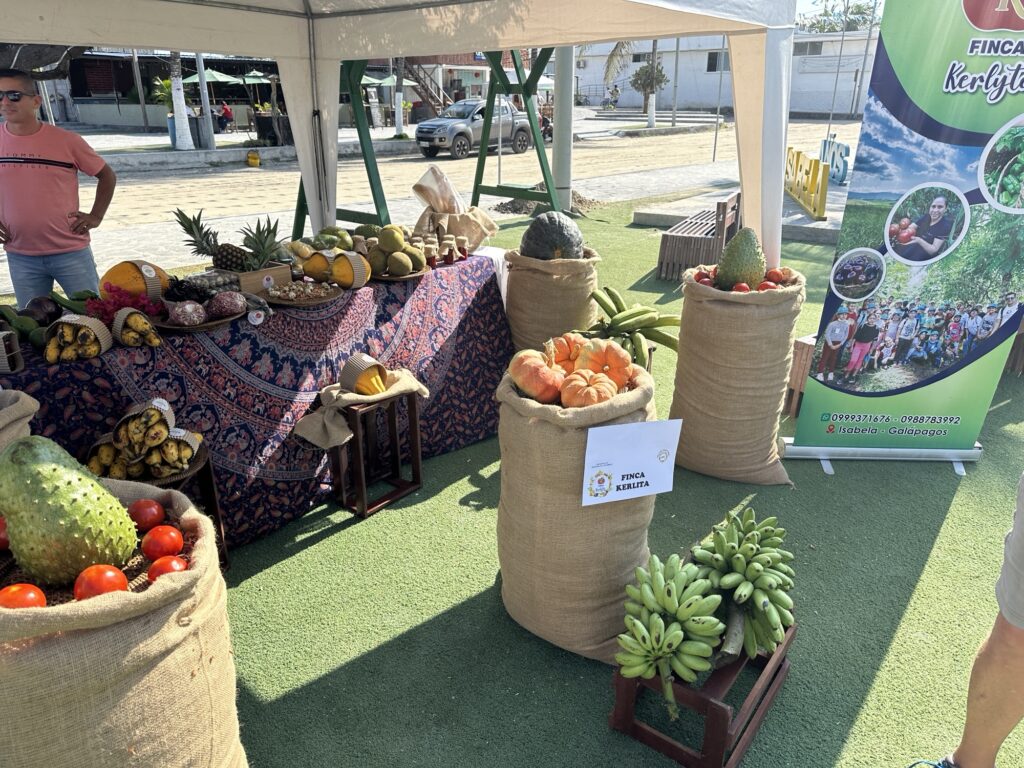
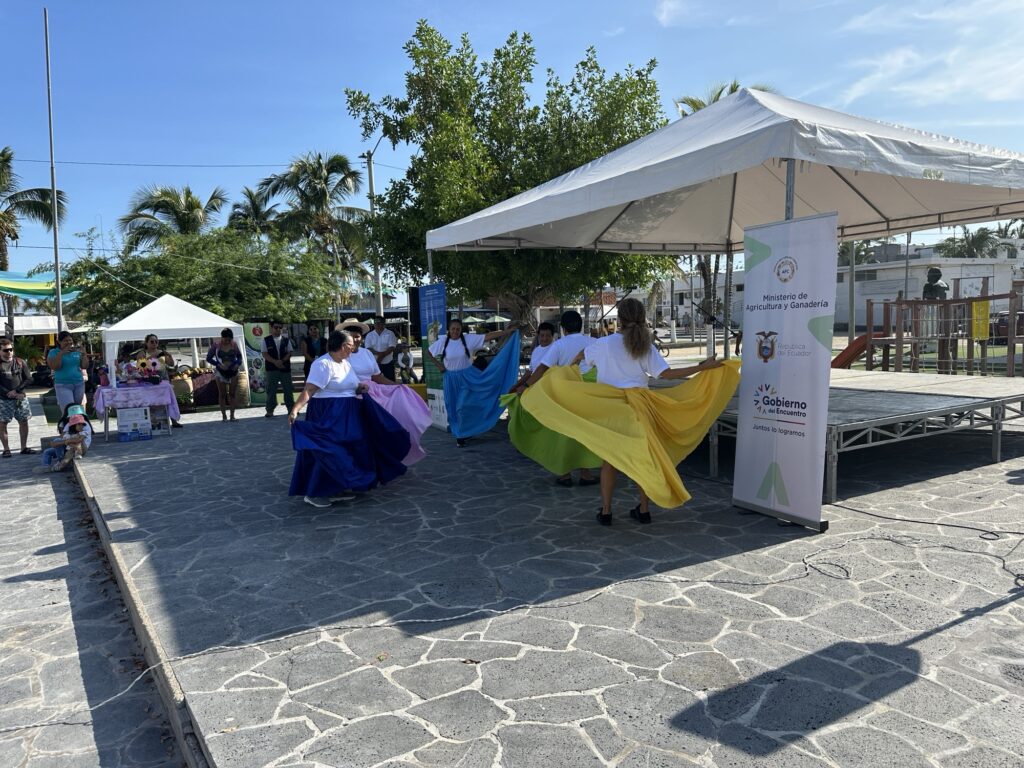
The following day, we had a quiet day relaxing on the boat, licking our wounds on our toes after a day of wearing shoes, which is not something we are used to. The captain had something special planned for this day, as it was Easter Eve. He made his famous roasted lamb leg, which we had saved in the freezer for this occasion. We invited Tom and Karmen to join us, and this was their last night before starting their 3000nm passage to French Polynesia.
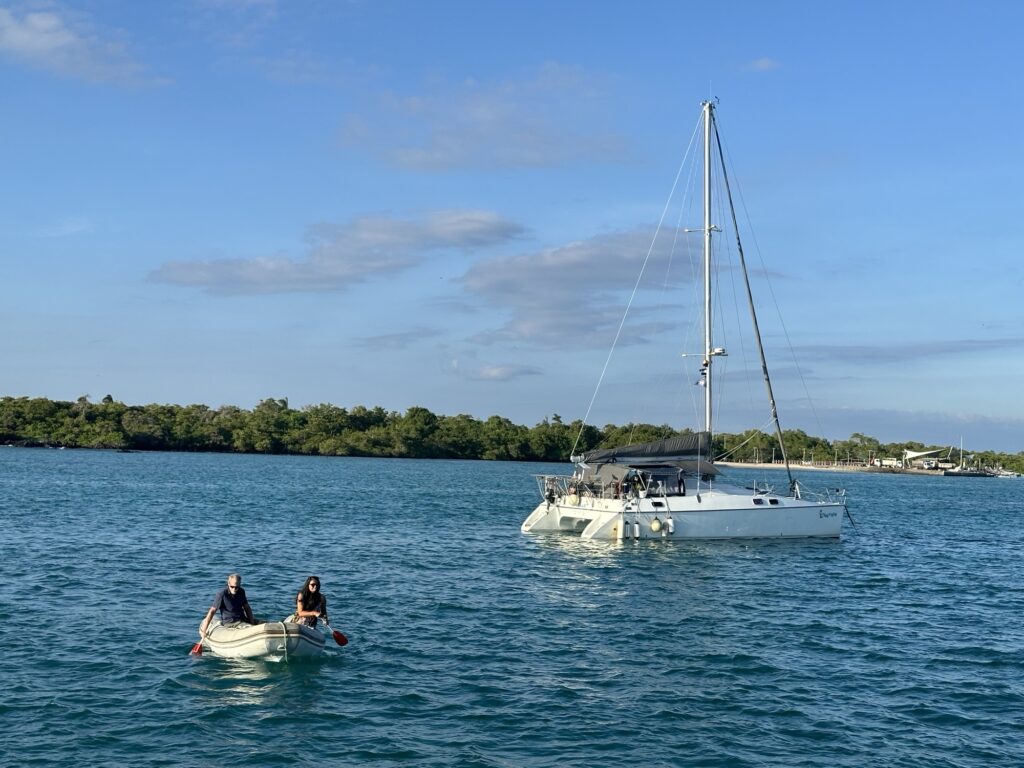
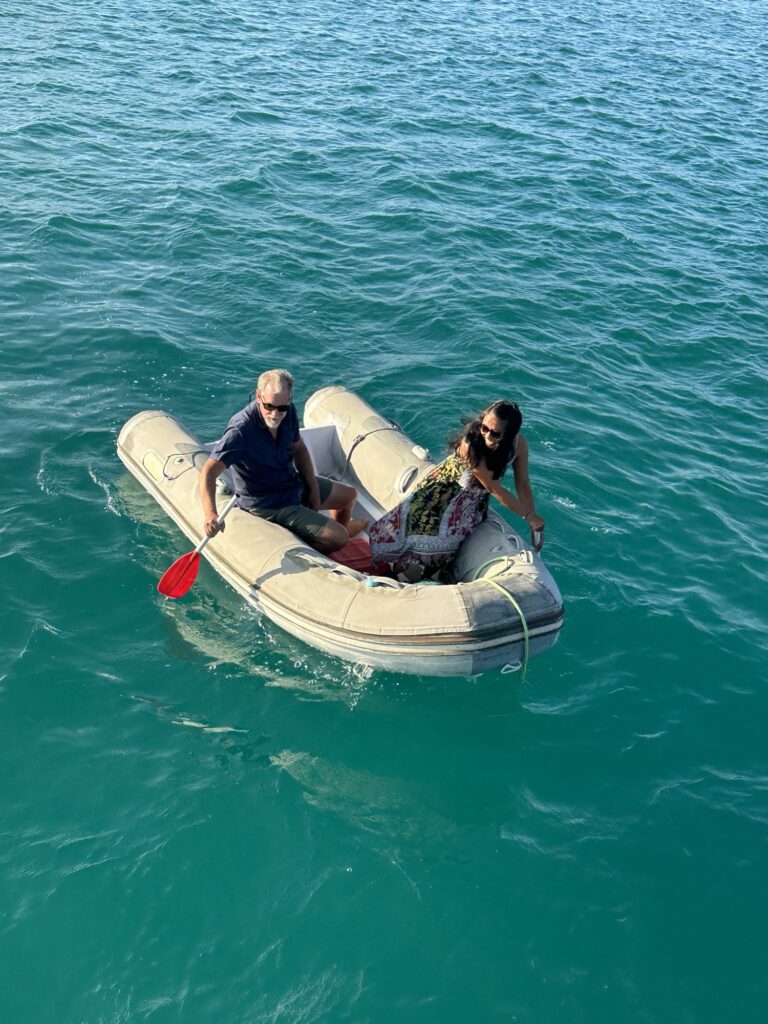
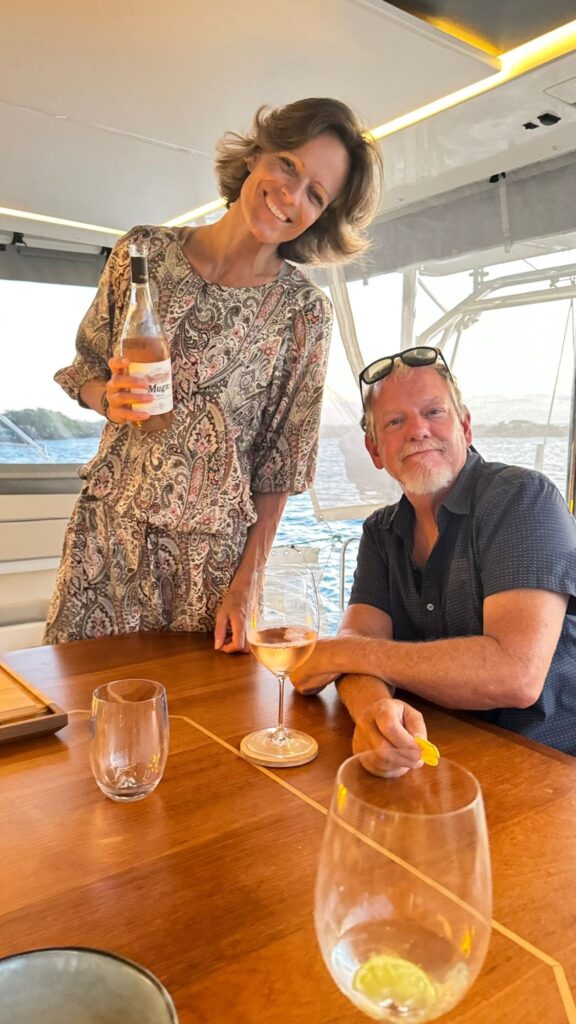
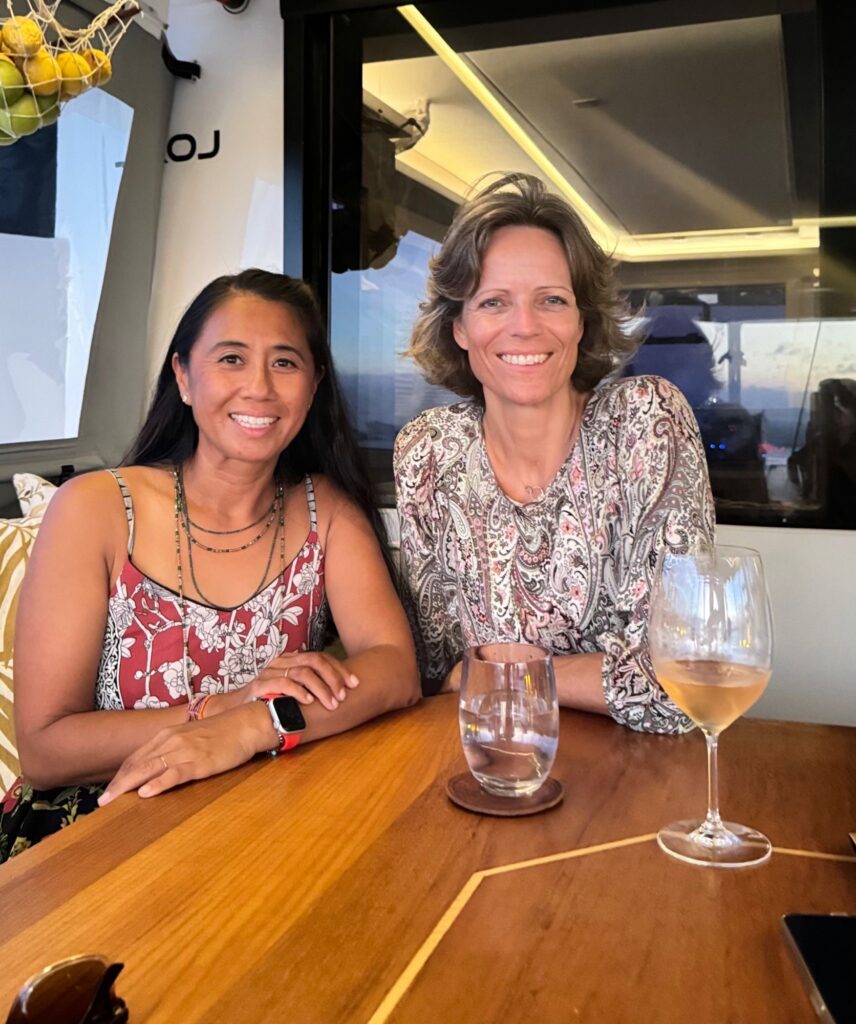
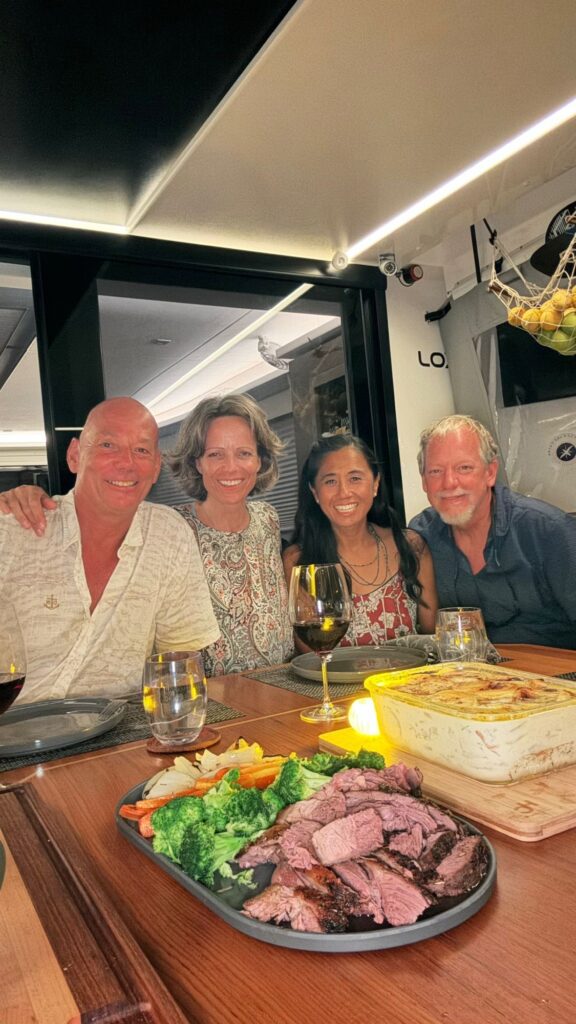
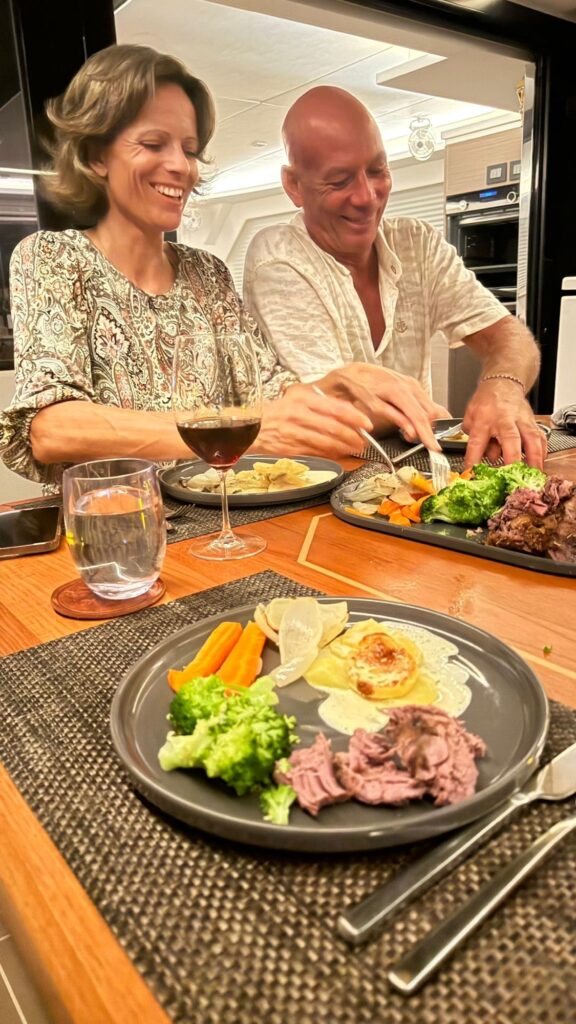
We were sad to see Tom and Karmen sail away the next day. Wishing them a safe passage, and hoping to see them soon in French Polynesia!
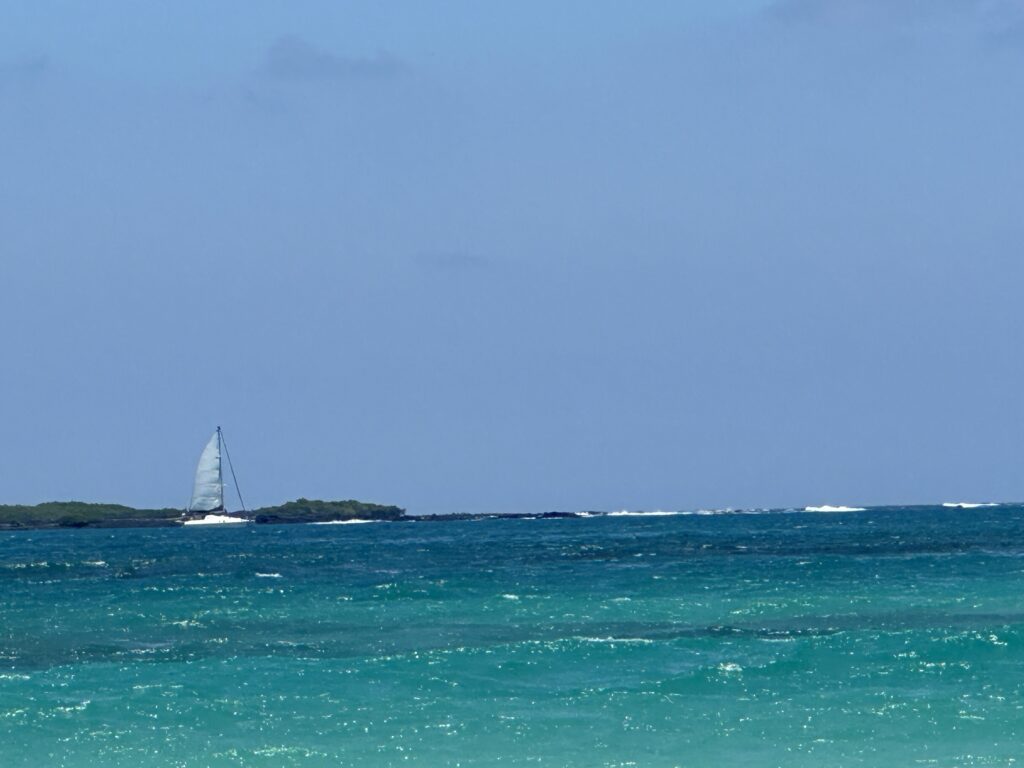
We went for a long walk on the beach, and did a little local sightseeing.
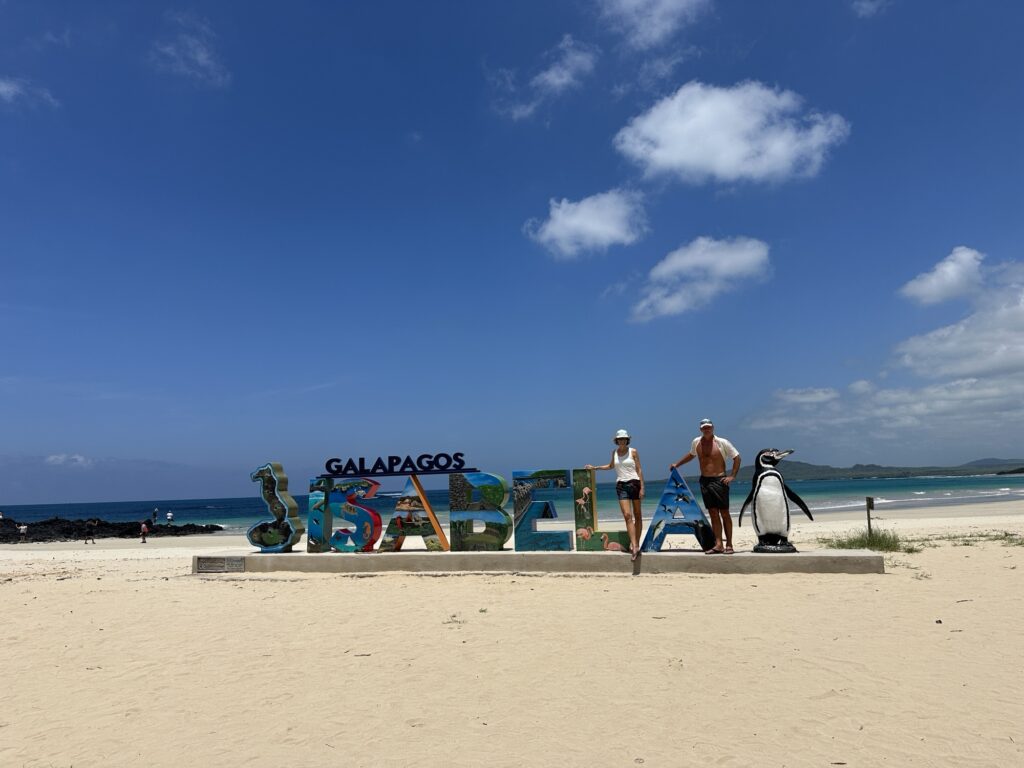
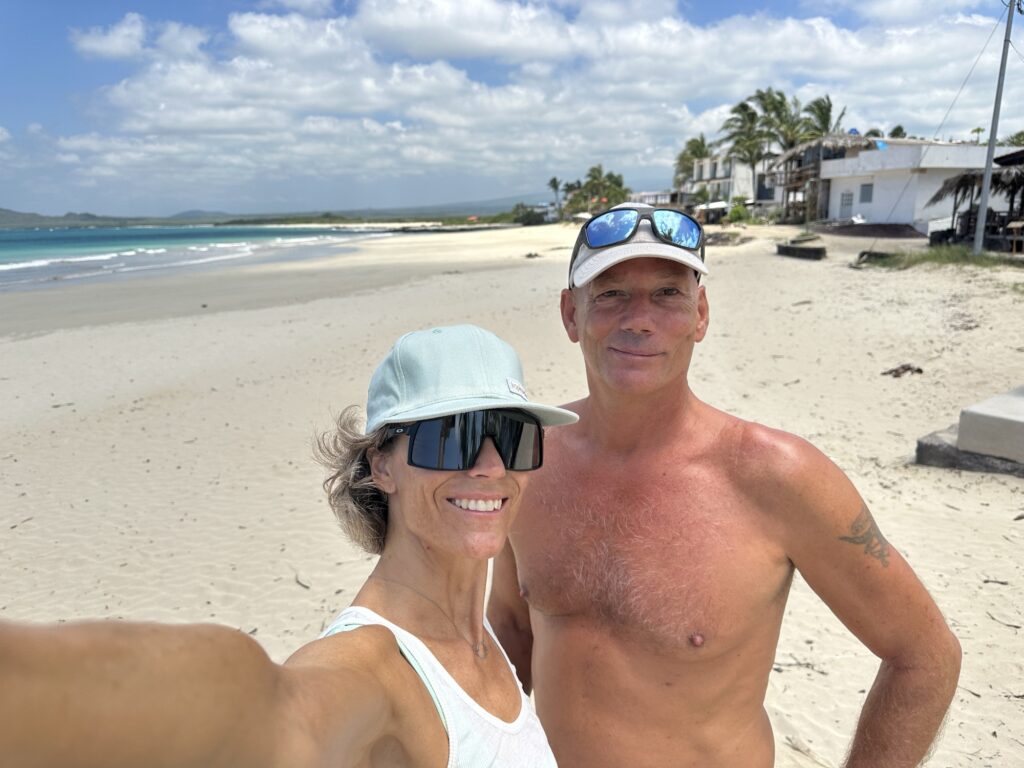
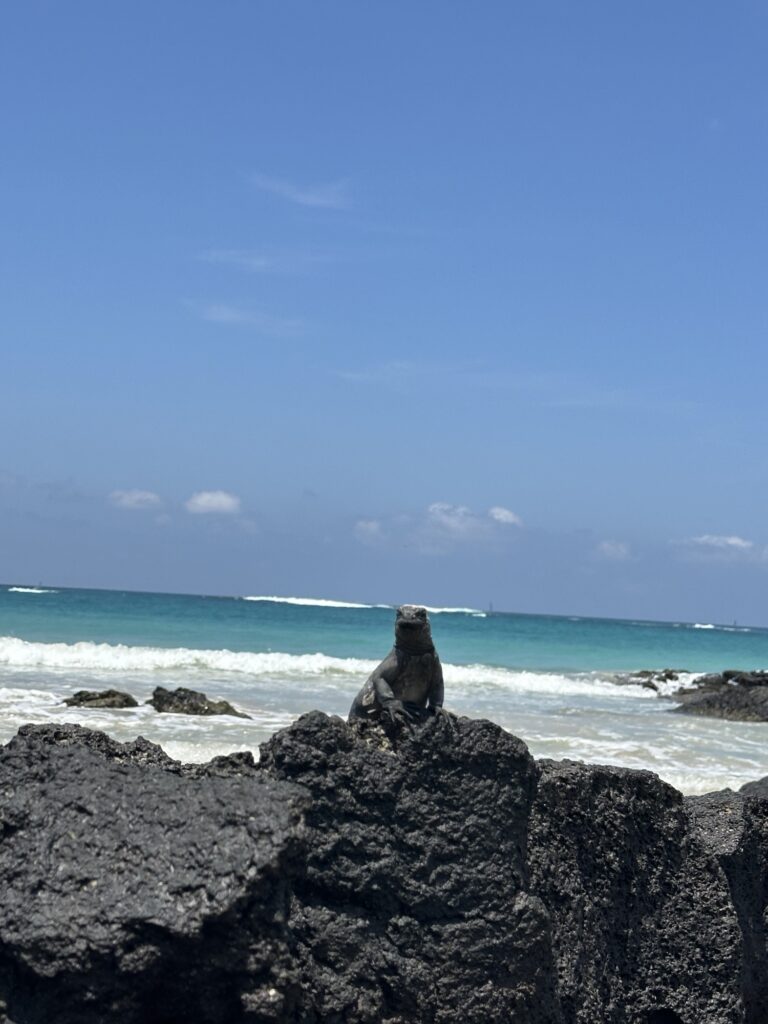
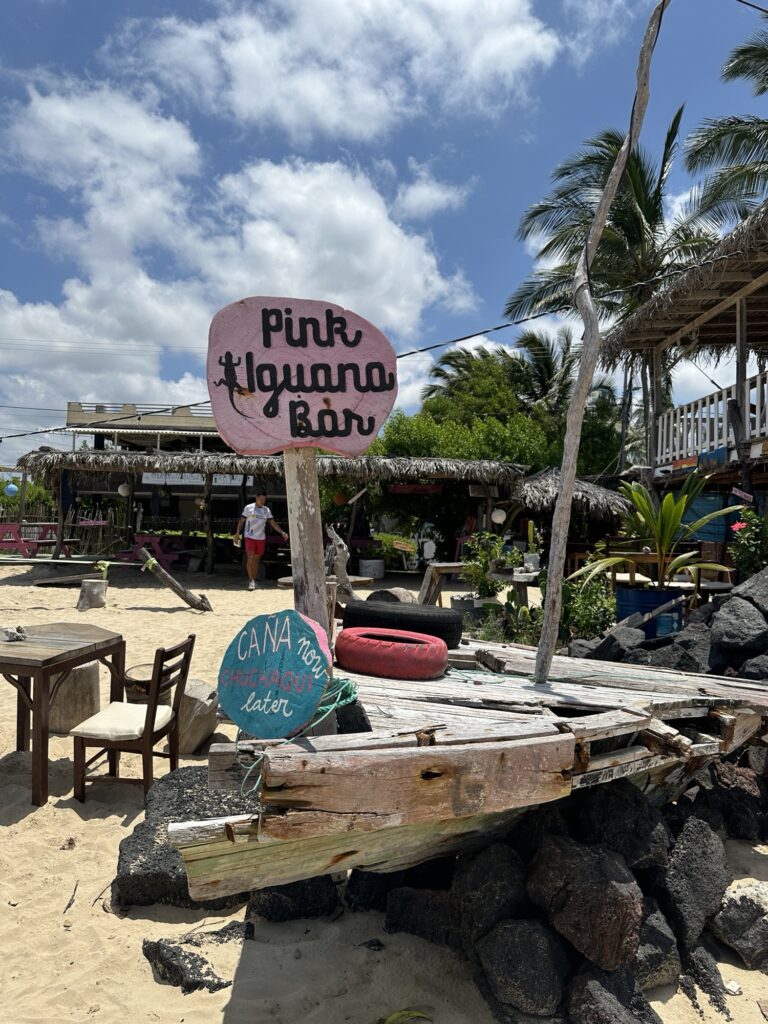
We discovered that the beach was a fairly good surf beach, so we signed up for a surf class the following day. The captain has tried surfing once, 25 years ago, and the admiral has never tried it. We were hoping our little knowledge of windsurfing and kite surfing would help, as well as our experience in snowboarding.
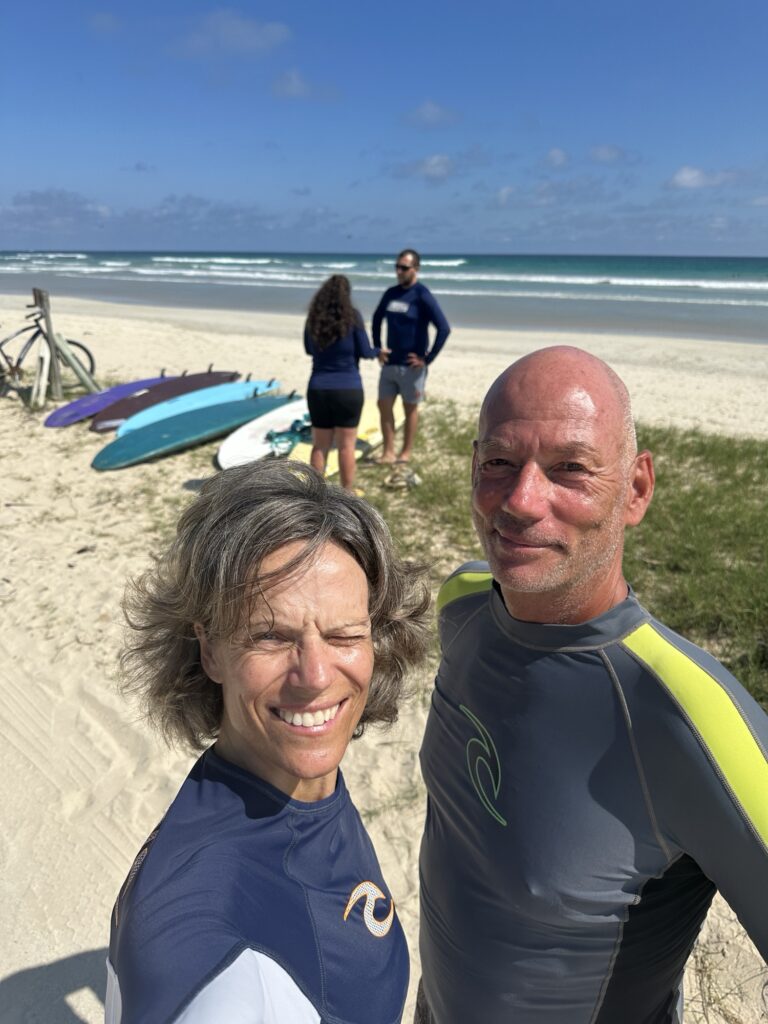
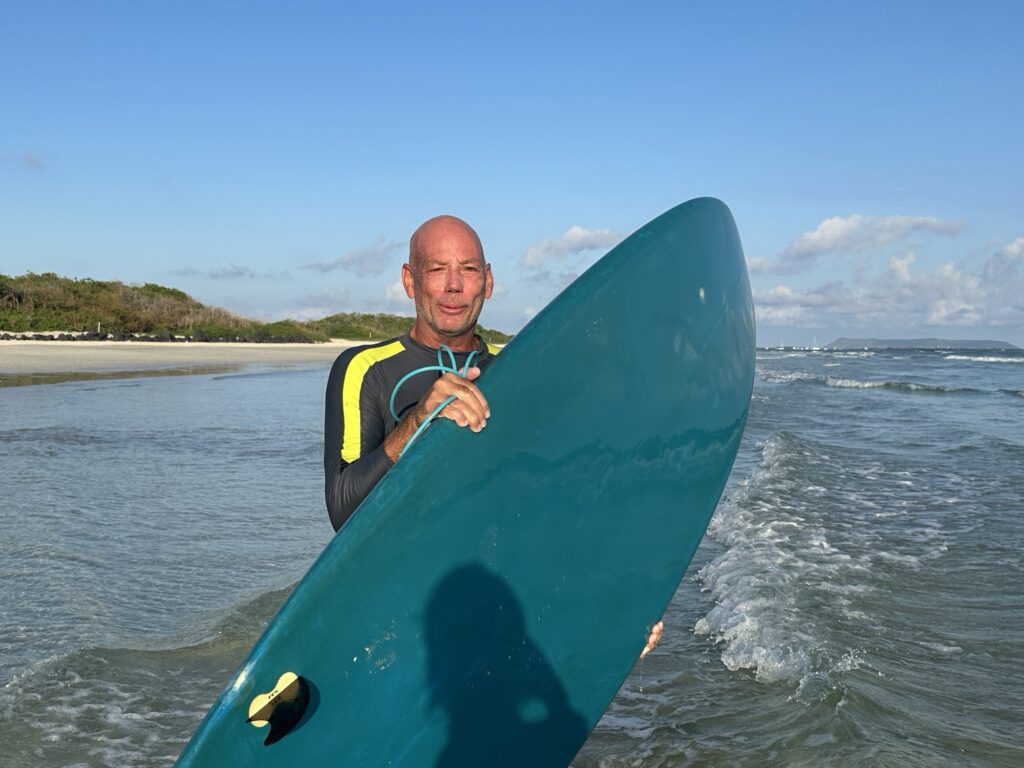
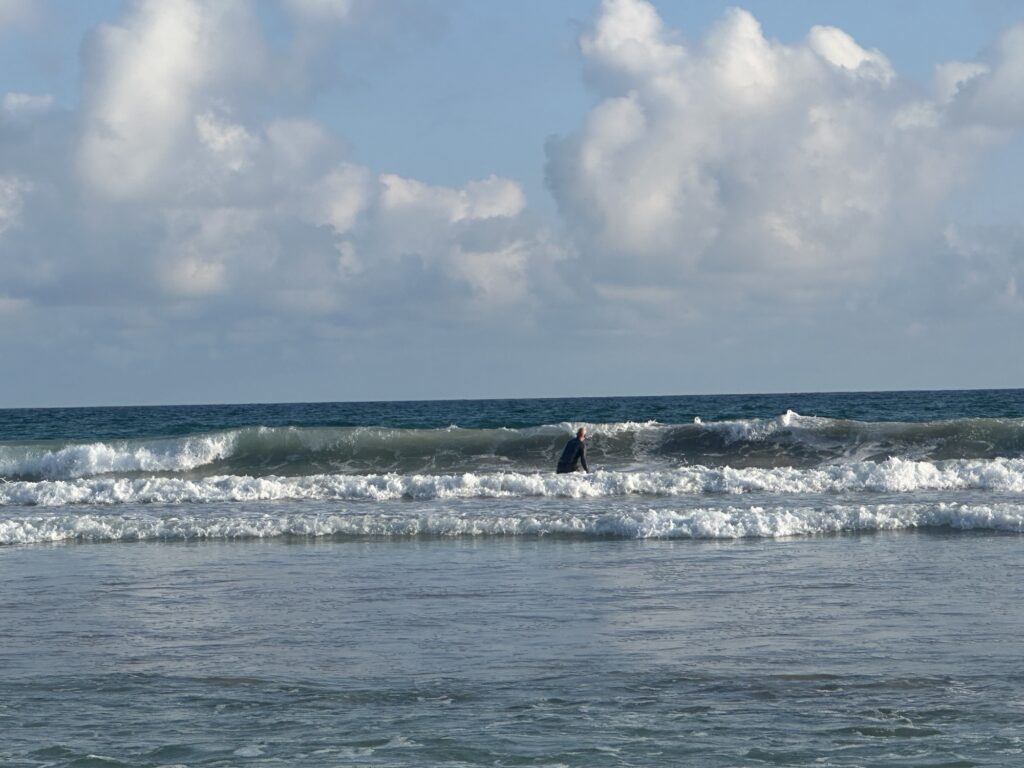
We each managed to get up on the board during the class, so the goal was reached! Definitely a challenging sport, where there are many elements to master. Our backs were sore from paddling the following day, so we realized it’s definitely a physical sport.
One day, we took our bikes to visit an infamous site not too far from town. All of the roads in town are made of sand, and so are some of the surrounding roads as well. We rode for about 7 kms to reach the Wall of Tears. This was a wall built by inmates from the local prison between 1946-59. Apparently there was no purpose to the wall, other than to provide extra punishment.
The name comes from the tears of the inmates, as it was hard labor. Many prisoners supposedly died while building this wall.
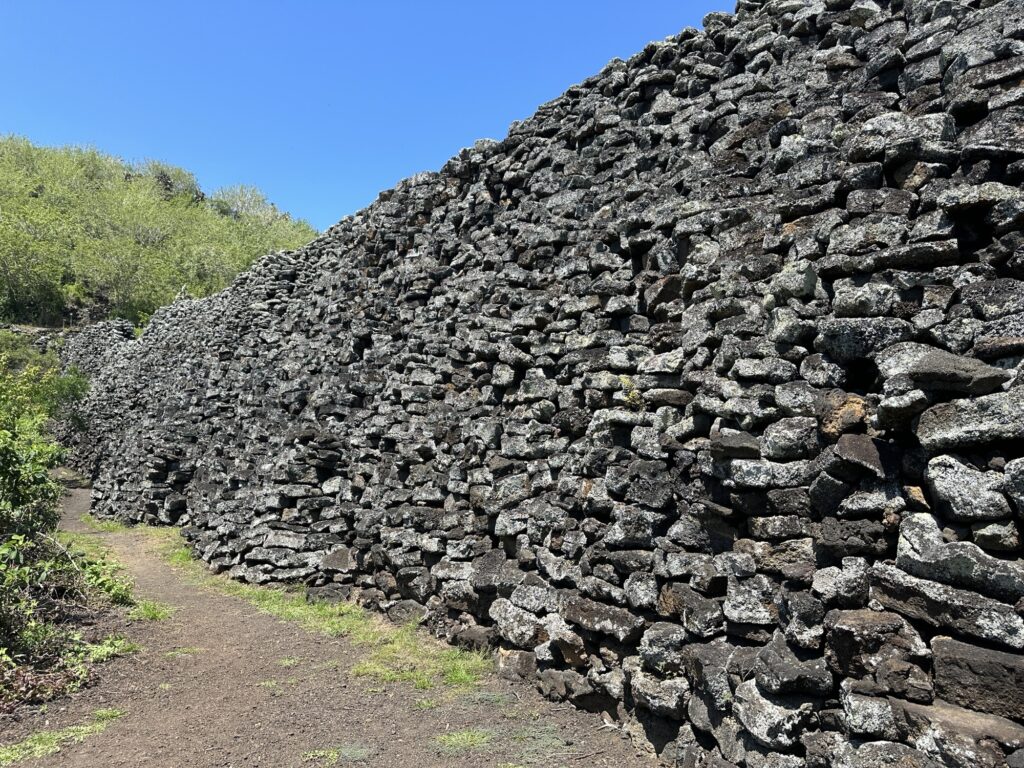
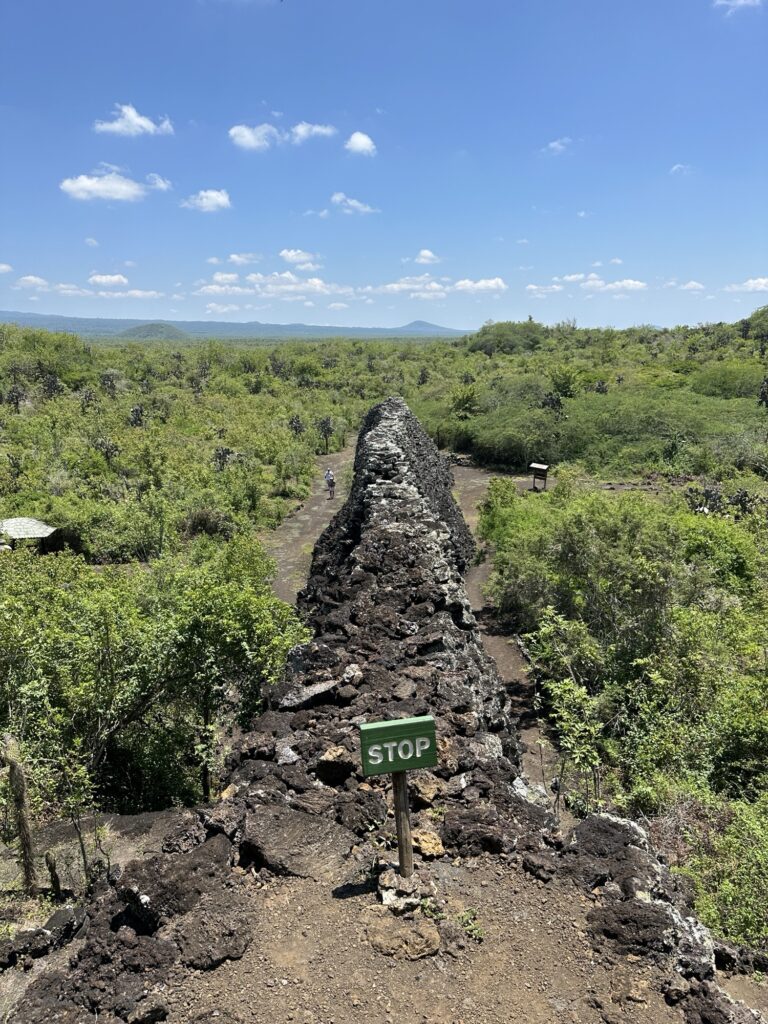
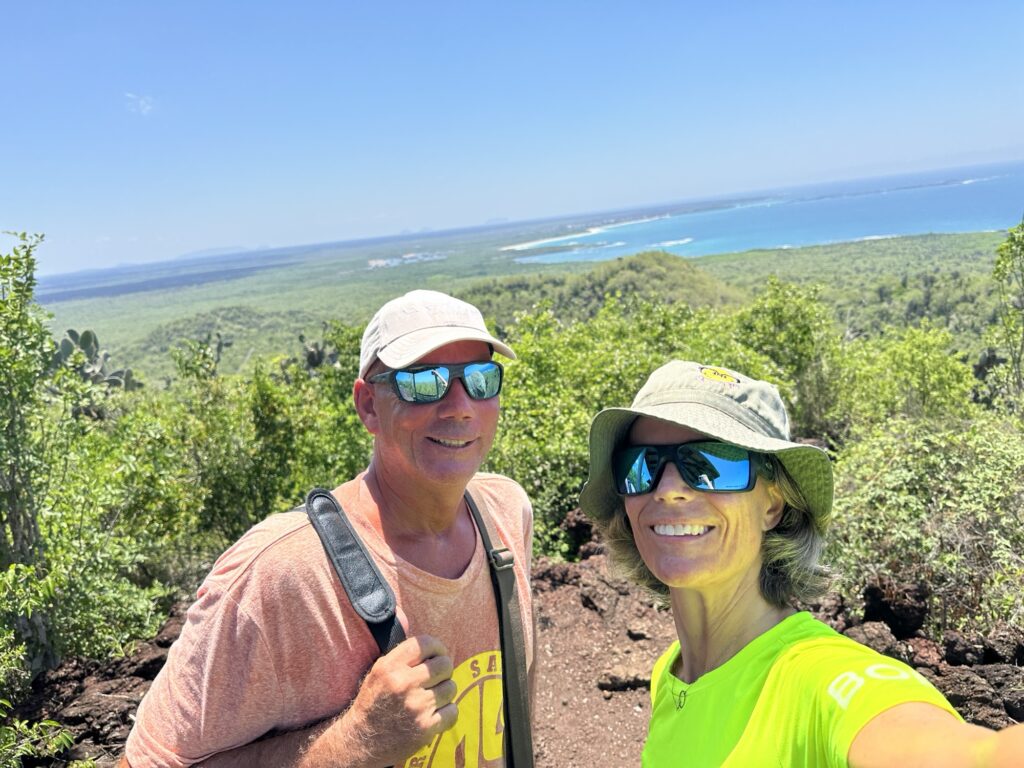
As we discovered in this bike ride, cactus and bike is not a good match…. The captain got a spike in his tire 50 meters before reaching Walk of Tears, which meant we walked the 7 kms back to town… it was midday and grueling hot.
Lucky for us that biking is popular here, and that there was a bike rental place where we could fix the tire.
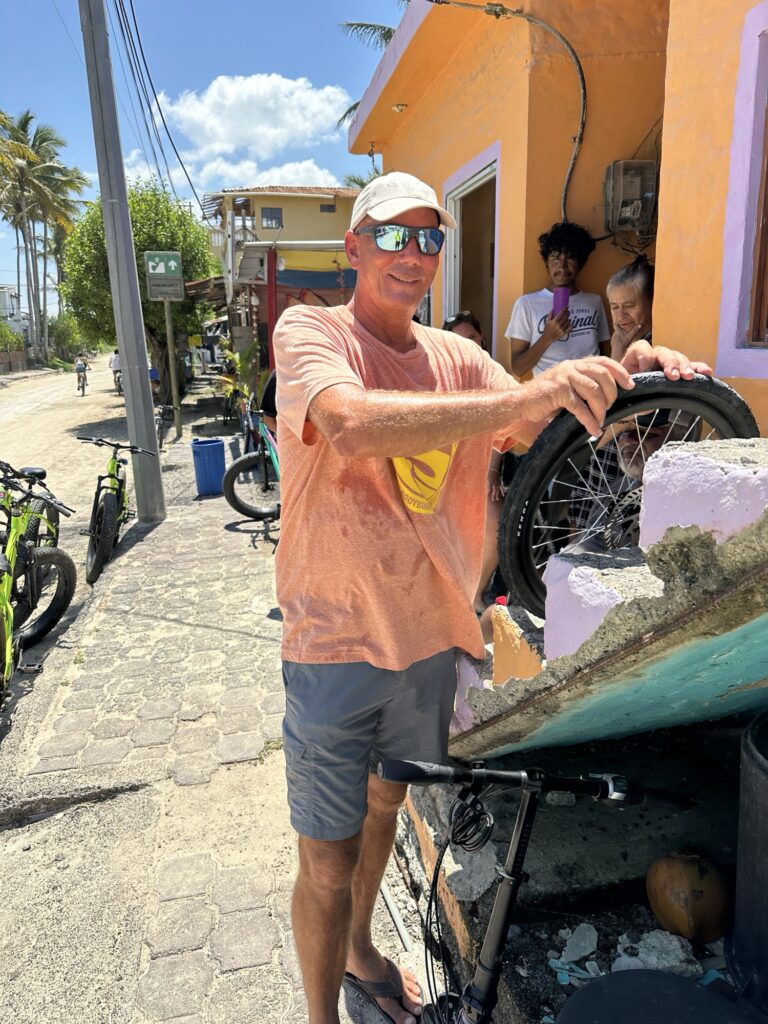
We went a couple of days later to visit the local tortoise breeding center, and then it was the admiral’s turn to get a flat. So, the only way to keep biking in a place with many cacti, is to insert an extra protector inside the tire, we learned. This cannot be found here, so the bikes are parked on the boat for now.
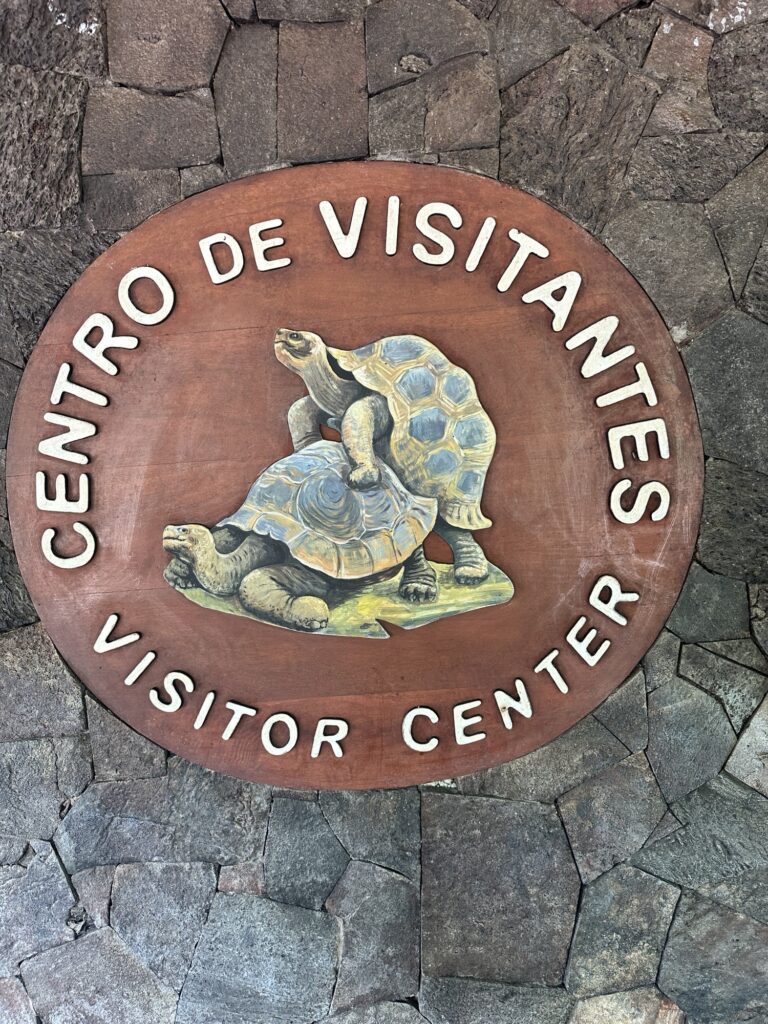
Each of the islands has a center for breeding tortoises. There are different breeds on each island, and the goal is to get the population up until it can sustain itself in the wild. By the looks of it, this center was very successful, as we witnessed lots of mating going on!
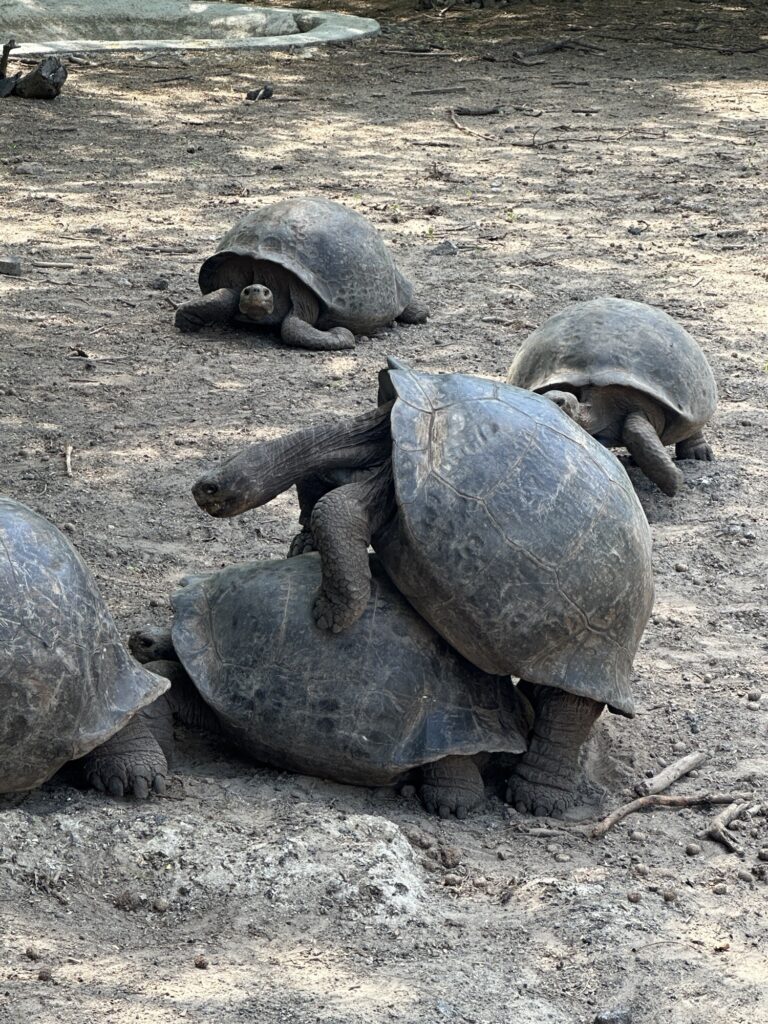
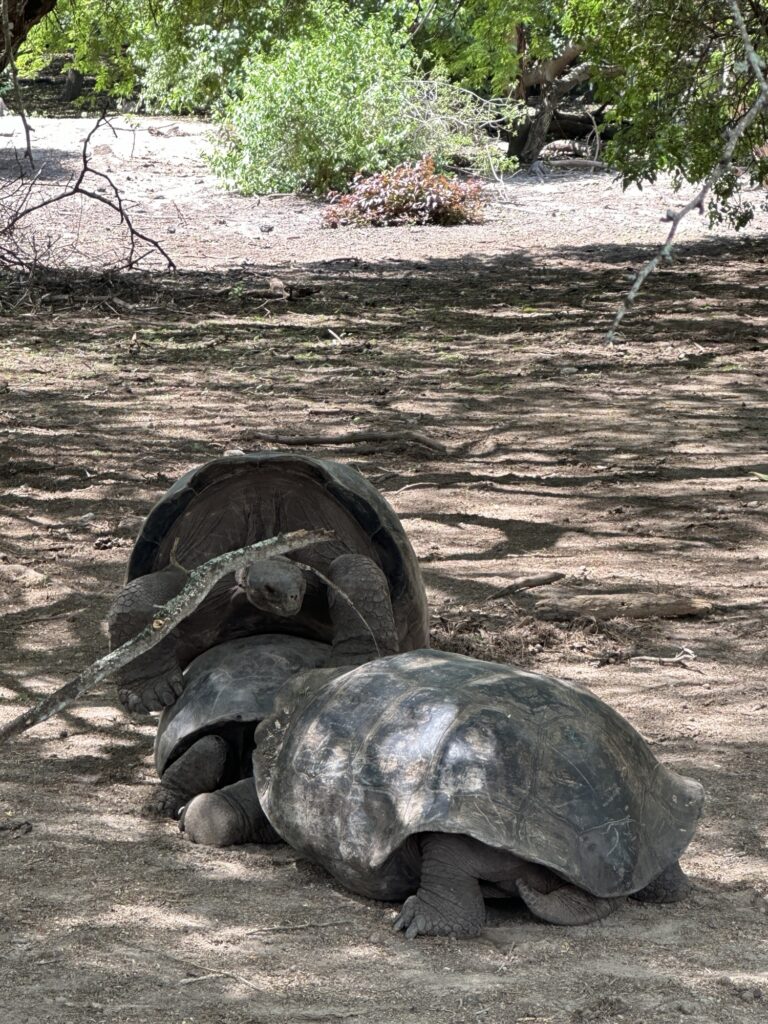
A tortoise can lay 10-20 eggs, and the babies are closely monitored by the staff and volunteers.
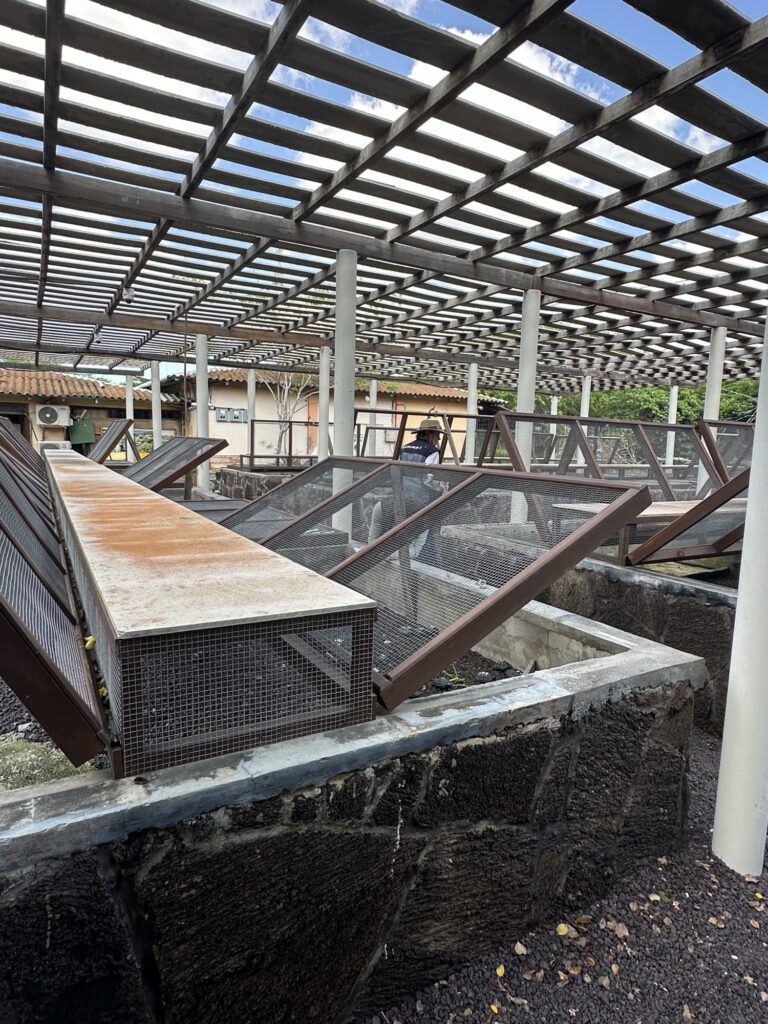
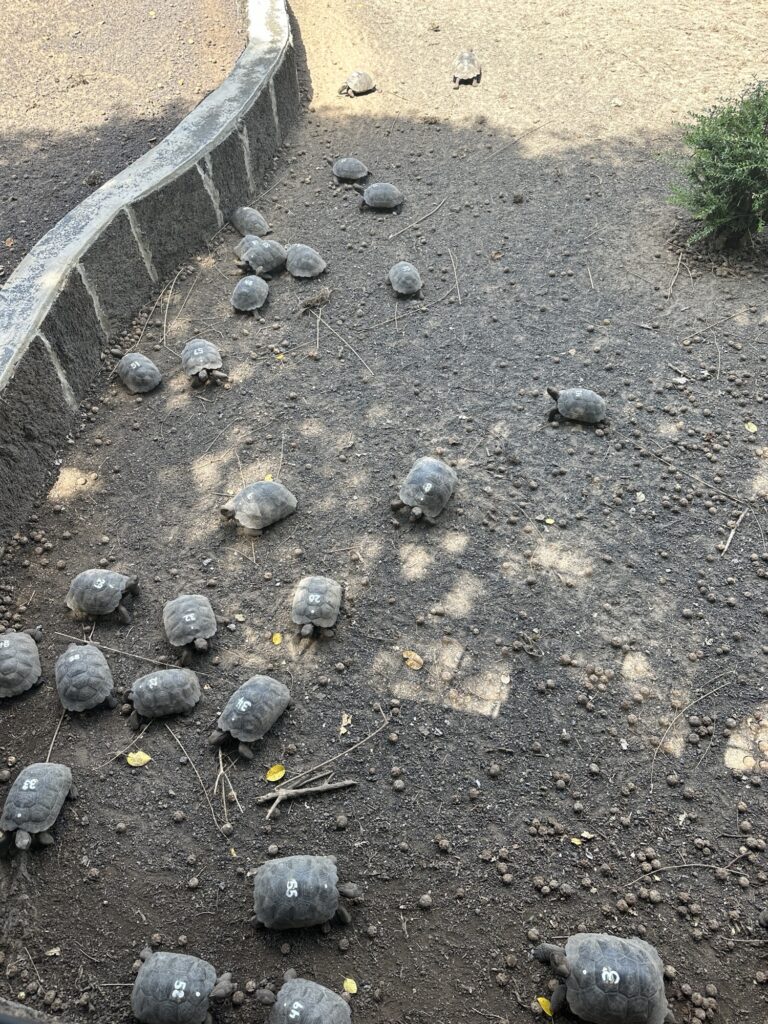
Isla Isabela has been a week of diversity. It is truly a beautiful island, with lots to see. Most of it is closed off for land tourism, and can only be reached by boat. And even then, there are many restrictions on what one can do. This visit gave us a good indication of just how well the Ecuadorians are at protecting these very special islands with many endemic species.
We enjoyed a last sunset on a beach bar, reflecting over how privileged we are to experience this, and preparing our hop the next day to the smallest island we will visit, Isla Floreana.
